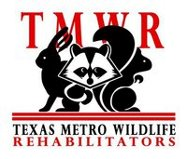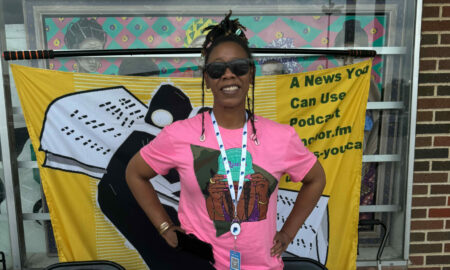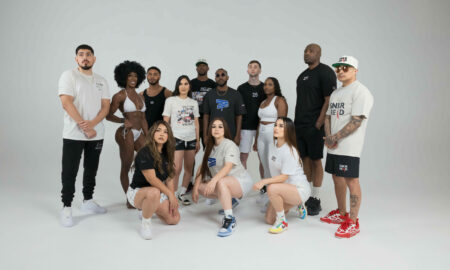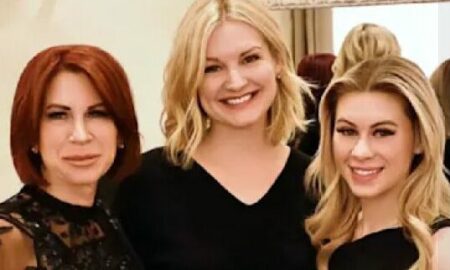
Today we’d like to introduce you to Nancy Chinchilla.
Thanks for sharing your story with us Nancy. So, let’s start at the beginning and we can move on from there.
Early morning of April 2014, I was packing for a one day business trip to Chicago when my little dog Maddie jumped on my suitcase with a baby opossum. Maddie is a terroir and great hunter and she usually brings me birds but on this day it was an opossum. I was able to get it away from her and put it in a shoebox. When I returned I started to google wildlife rescue organizations and found Texas Metro Wildlife Rehabilitators (TMWR). I contacted them and one of their rehabbers lived in Arlington so I took the baby to her the next day. She was a squirrel rehabber and was going to triage this baby because it has flees and puncture wounds. She told me she would eventually take it to an opossum rehabber.
Fast forward to 2016 and I was trying to figure out what I wanted to do when I’m able to retire. I tried working with some dog rescue groups which turned out to be a major bad idea because I’m a dog lover and wanted to take them all home. At the time I had three dogs of my own. I remembered the lady in Arlington that rehabbed squirrels and reached out to her. I spent several months helping her feed babies, cleaning cages and releasing squirrels. The great thing about wildlife is they always go back to nature. It’s illegal to keep wildlife as a pet. I started learning more about TMWR and attended their general meetings which are open to the public. Wildlife rehabilitation is a vocation and not a hobby. States and the federal government protect and manage wildlife. Only permitted wildlife rehabilitators can provide care. Texas Parks and Wildlife Department is responsible for wildlife regulations. No one makes money doing this kind of work and the medications and special formulas are expensive. Depending on the species, it takes about two years of mentoring from a permitted rehabber before someone can have the competencies to do this kind of work.
TMWR was started in 2010 by Bonnie Forte and a group of wildlife rehabilitators. Bonnie was the first President and did a great job with her Board of Director in laying the foundation for the organization. One of the best things I think they did was to structure the organization so it would be home based. This way, our operating cost would be low and a majority of the donations we receive would go directly to the membership to help pay for their rehabbing expenses. TMWR was created to help ensure that there would be an organization available to support the wildlife rehabilitation community. Our primary focus is the rehabilitation of squirrels, opossums, cottontail rabbits, deer, raccoons, skunks, deer and foxes. We also help find rehabbers outside our species group such as the Rogers Wildlife Rehabilitation Center which does bird rehabilitation.
TMWR is a non-profit 501(c)3 organization of state-permitted and sub-permitted wildlife rehabilitators and volunteers. All our members are volunteers and reside in the state of Texas. TMWR does not receive any monetary help from any local or government agencies and depends solely on public donations. The purpose of the organization is to accept native Texas orphaned, ill, injured, or displaced wildlife as is permitted by law, for rehabilitation, until such time the animal is of sufficient age or recovery that it may be safely released into a proper environment.
The specific objectives of this organization are to:
• Provide for the rehabilitation of native wildlife.
• Provide continuing education programs to our members and educate the public regarding the needs of our wild neighbors.
• Mentor volunteers in wildlife rehabbing techniques to obtain their state wildlife permit.
• Support our rehab membership with supplies to help in their wildlife rehabilitation activities.
Great, so let’s dig a little deeper into the story – has it been an easy path overall and if not, what were the challenges you’ve had to overcome?
We celebrated our tenth anniversary this year and a lot has changed. I joined TMWR in 2016 and became it’s President in 2018. The two other Board members I work with are Sandy Leissler who is our Vice President and Donna Summers is our Secretary. The current Board has increased our membership and donations through social media campaigns and grants which now enables us to do bulk buys of the medications and special formulas for our membership. This year we kicked off an expended series of wildlife classes which unfortunately has been negatively impacted by the COVID-19 pandemic. We are very fortunate that we get donations of expired or damaged food and materials from Walmart, United Fresh Produce, Amazon and Costco. These vendors have become a critical pipeline for our rehabbers. We are the stewards of mother nature orphans and like all non-profits our donations are down and our work can’t stop.
Texas Metro Wildlife Rehabilitators – what should we know? What do you guys do best? What sets you apart from the competition?
I’m very proud we have survived as a non-profit for ten years and I hope I can leave TMWR with a strong enough foundation to last an eternity.
What moment in your career do you look back most fondly on?
I was reelected in January to serve another two years as TMWR President.
Contact Info:
- Address: 2232 Turf Club Drive
Arlington, TX 76017 - Website: https://www.txmwr.org/
- Email: TXMWR@yahoo.com
- Instagram: https://www.instagram.com/texasmetrowildliferehab
- Facebook: https://www.facebook.com/TXMWR
- Other: https://www.linkedin.com/company/tmwr








Image Credit:
TMWR
Suggest a story: VoyageDallas is built on recommendations from the community; it’s how we uncover hidden gems, so if you or someone you know deserves recognition please let us know here.

















